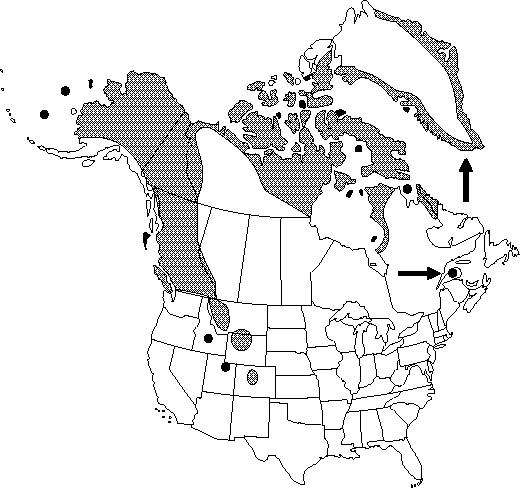Ranunculus pygmaeus
Fl. Lapp., 157. 1812.
Stems erect or ascending from short caudices, 0.6-3.5 cm (sometimes longer in fruit), each with 1-2 flowers. Roots slender, 0.1-0.6 mm thick. Basal leaves persistent, blades reniform to transversely elliptic or semicircular, 3-parted or -divided, 0.45-0.9 × 0.6-1.3 cm, at least lateral segments again lobed, base truncate or nearly cordate, margins entire, apex rounded to obtuse. Flowers: pedicels glabrous or pubescent; receptacle glabrous; sepals 2-4 × 1.2-1.6 mm, abaxially sparsely hairy, hairs colorless; petals 5, 1.2-3.5 × 1.1-2.8 mm; nectary scale glabrous. Heads of achenes nearly globose to cylindric, 2.5-7 × 2.5-5 mm; achenes 1-1.2 × 0.8-1.1 mm, glabrous; beak subulate, straight or curved, 0.3-0.7 mm. 2n = 16.
Phenology: Flowering summer (Jul–Sep).
Habitat: Arctic and alpine meadows and slopes, usually around persistent snow patches
Elevation: 0-4000 m
Distribution

Greenland, Alta., B.C., Nfld., N.W.T., Que., Yukon, Alaska, Colo., Idaho, Mont., Utah, Wyo., Europe (Spitsbergen).
Discussion
Ranunculus pygmaeus var. langeana has been described as having deeply divided basal leaves and strongly elongate heads of achenes (at least 5 mm). These characteristics are not well correlated with one another, however, and the variety does not seem natural.
Selected References
None.